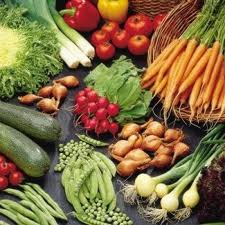Some Tips For Indoor Vegetable Gardening
People around the globe have been collecting and cultivating herbs for many years. They have used them to flavor food, for medicinal reasons, for the reason that they smell good and for decoration. Many individuals have even believed particular herbs have magical qualities. Fortunately, you are able to grow these dynamic plants indoors and also outside the house. Indoor vegetable gardening, nonetheless, has special requirements. For starters, your plants need to grow in containers.??Light is the main element for indoor vegetable gardening. In case you have a sun room or a greenhouse window, you could grow any kind of herb.
vegetable gardenThey need not more than six hours of direct sunlight per day. If you need to use non-natural light, you can purchase fluorescent light systems created for indoor vegetable gardening, otherwise you can rig your own combination of warm white and cool white fluorescent tubes. Make the shelves that hold the lights of your plants movable so they are able to be moved as the herbs grow.
The plant tips should always be 5 or 6 inches below the tubes. Your plants require 14 to 16 hours of synthetic light every day.??Make use of porous soil for indoor vegetable gardening. It allows easy air circulation, holds water well but drains with ease. A good commercial potting dirt is good, but you can reduce expenses by making your very own. For making a couple of bushels of potting soil for indoor vegetable gardening, combine just one bushel of milled sphagnum peat moss, one bushel of horticultural grade perlite, 10 tablespoons of ground limestone, five tablespoons of single superphosphate, two tablespoons of potassium nitrate and one teaspoon full of iron chelate.?Plants grown by indoor vegetable gardening do not possess the deep root systems of plants in outdoor gardens, and so the soil ought to be kept slightly wet, even for the hardiest varieties like rosemary and sage. Keep the dirt damp, but certainly do not over-water it. When you have to utilize a heavy garden soil, use a mulch to keep the surface from caking.??If you use a commercial potting soil for indoor vegetable gardening, read the packet to see if it already has nutrients added.
If it has not, or in case your soil happens to be broken down, the leaves on your herbs will change yellow and growth could very well slow. You will now have to utilize fertilizer. Follow label guidelines, and start by using only half the suggested strength to see if that works. The oils of over-fertilized herbs lose flavor and fragrance.??Herbs are not very vulnerable to pests, your indoor herbs could be targeted by mealybugs or whiteflies. If you see these insects on your plants, don't panic. Rub them all away with cotton swabs or just simply your finger. Generally if the infestation is very large, wash it off with slightly soapy water. Cut off infected stalks. Your indoor vegetable garden will soon recuperate.
Indoor Vegetable

